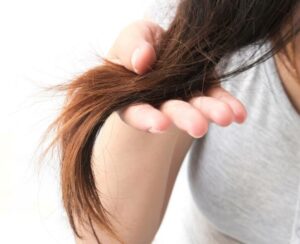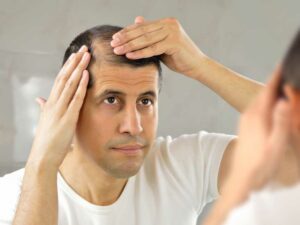While hair loss in 2015 isn’t the taboo that it was in decades past, there is no doubt that hair loss can still be stressful and embarrassing for many folks. In fact, 70% of men and 40% of women will experience hair thinning as they age: This is due to what is known as androgenetic alopecia-the scientific term for male and female pattern baldness. Fortunately, there are many hair loss products on the market that have been shown to be effective in reducing the amount of hair loss that patients experience, and in some cases stop hair loss altogether. But, scientists have not yet discovered a cure for hair loss, but they are close. Here, you will learn about the latest advances in hair loss treatments as scientists attempt to make hair loss a thing of the past.
Propecia and Rogaine For Hair Loss
For instance, Propecia and Rogaine are hair loss treatments that are prescribed to patients who suffer from androgenetic alopecia. They are generally well tolerated and work by stimulating the body to boost hair follicle regeneration. Minoxidil, the primary ingredient in Rogaine, works by increasing both nutritional and blood flow to hair follicles and also helps restore hair follicles that were once dormant (inactive) back into an active stage of hair growth.
As for Finasteride, the primary ingredient in Propecia, it works by blocking DHT formation. DHT stands for “Dihydrotestosterone”, and is a male sex hormone (androgen) that damages hair follicles and prevents the growth of thick, healthy, and strong hair. However, while both of the aforementioned medications have their benefits they also have their limits. For example, both need to be applied daily and are unable to repair hair follicles that have been permanently damaged.
Hair Transplantation To Treat Hair Loss
Then there are hair transplantation procedures, whereby doctors extract healthy hair follicles and insert them into balding areas to help promote the growth of new, healthy, hair follicles to fill in the bald gaps. The good news is that technology has advanced to the point that doctors can now use robotic technology to accurately extract and transplant follicular grafts with very little to no scarring. However, even hair transplantation has its limits, as not only are such procedures expensive-costing as much as $10,000 in extreme cases-but they don’t stop additional hair loss in the future, and are limited by the amount of hair that the patient already has available to work with.
Xeljanz (Tofactinib) & Ruxolitinib Possible Cure For Alopecia Areata?
However, a recent case involving a young man named Kyle Rhodes has provided hair loss sufferers from around the world with hope. The 25 year old lost all the hair on his body due to a rare condition known as alopecia areata. Mr. Rhodes was treated with Xeljanz (Tofactinib) which is commonly prescribed to patients who suffer from rheumatoid arthritis. However, the same drug managed to help Mr. Rhodes grow back his hair after only 8 months. Interestingly, Mr. Rhodes’ doctor, Dr. Brett King, prescribed the medication to help Mr. Rhodes deal with his severe psoriasis- a skin condition that causes large rashes and pink blotches on the skin. Dr. Brett King is currently looking to duplicating the results of Xeljanz on other patients who suffer from severe hair loss in laboratories from across the United States.
Moreover, in the same year as Mr. Rhodes’ incredible hair growth story, Nature Medicine published some amazing research of their own. They found that the cancer drug Ruxolitinib, which is commonly administered to treat bone marrow cancer, restored half of the hair of patients who suffered from alopecia areata after just 5 months of the oral treatment. Furthermore, their research on human patients had been replicated in the past, only on animals instead of human subjects. However, we should take these research findings with a grain of salt.
That is, scientists believe that the aforementioned drugs worked to reverse hair loss in the patients because of their suppressive effects on the immune system. In other words, these drugs belong to a new class of drugs known as JAK inhibitors. Pharmaceutical companies are currently hard at work trying to create topical forms of JAK inhibitors that can be applied directly on affected areas like a cream or an ointment, and clinical trials involving topical forms of Tofactinib should take place in the not-too-distant future.
Another thing to take into consideration is that hair loss caused by alopecia areata is due to autoimmune disorders. People who suffer from androgenetic alopecia-on the other hand-suffer from hair loss for completely different reasons. As a result, a different approach will be needed to help the 4 million Americans who are currently suffering from male or female pattern baldness.
The Unlimited Potential of Stem Cell Therapy
Scientists believe that the ideal way to permanently treat hair loss is by creating a limitless supply of hair. Researchers are currently working on creating new hair cells from scratch using a technique known as stem cell therapy. Stem cell therapy, it is believed, will help stimulate new hair growth when applied to hair loss treatments. This is because stem cells are undifferentiated cells; cells that can be manipulated to transform into virtually any cell in the human body, including hair follicle cells.
It is also important to note that a PLOS-One Study found that embryonic stem cells that were transformed into dermal (skin) papilla cells were able to stimulate newfound hair growth in albino mice. Dermal papilla cells are actually found underneath the scalp and are responsible for regulating our hair follicles. Thanks to using stem cell therapy, scientists can work with an unlimited pool of cells which can then be transplanted into patients who suffer from male or female pattern baldness.
The final step to possibly curing hair loss once and for all is to take the dermal papilla cells that were derived from the embryonic stem cells and insert them back into human subjects. The good news is that researchers claim that the technology to do so is just around the corner, so androgenetic alopecia sufferers won’t have to wait for much longer to experience permanent relief.
How Lifestyle Changes Can Reduce Hair Loss
In the meantime, adopting a healthy lifestyle can help, at the very least, in reducing subsequent hair loss. That means eating a balanced diet, reducing or eliminating cigarettes, alcohol, and drugs from one’s lifestyle, getting enough sleep to help stimulate hair maintenance and regeneration, and, perhaps most important of all, reduce the amount of stress and anxiety in one’s life. Also, if you notice your hair start to wisp away as you comb it you should see your dermatologist immediately. This is because FDA-approved hair loss medications, such as Finasteride and Minoxidil- are most effective when hair loss is caught early. Also, please note that Finasteride/Propecia is a pill that is only FDA-approved for men. It may also trigger certain unpleasant side effects; such as sudden weight gain, edema, headaches and increased heart rate.
Low-Level Laser Therapy Brushes
If side effects are a concern then another FDA-cleared treatment, known as Low-Level Laser Light Therapy, can be used without a prescription to combat hair loss. Low-Level Laser Light brushes are designed to stimulate energy cells found in hair follicles to become more active. These hair growth products also have the added benefit of being automated, turning off by themselves after the recommended period of low-level laser light exposure has ended.
Natural Treatments for Hair Loss
If, however, you wish to use a more organic approach to treat your hair loss, then you can use green tea. Some herbalists believe that the antioxidants found in green tea can help both prevent hair loss and boost hair growth. Essentially, you can try and see if green tea works for you by placing warm green tea from used green tea bags onto your scalp. Leave the green tea in for about an hour and then rinse it off with some cool water.
Another popular natural remedy for hair loss is using apple cider vinegar. Apple cider vinegar will help maintain the pH balance of hair and also clean the scalp, helping accelerate hair growth in the process. To properly dilute the apple cider vinegar you will need to mix 15 ml of apple cider vinegar into a cup of warm water that is filtered for a small batch, or add 75 ml into a liter of warm water for a larger batch. The final step is to apply the organic hair loss treatment onto your hair as a rinse after you are done with your routine hair washing.
Finally, coconut milk has been advocated by some doctors-including Dr. Blossom Kochlar-as a highly effective natural hair growth treatment. This is because coconut milk is rich in potassium, essential fats, and iron; all vital nutrients that hair need to properly grow and remain healthy and nourished. To make the coconut milk you will have to remove the coconut milk from a fresh coconut. Using pre-canned coconut milk purchased from your local supermarket will not work. Once you have extracted the fresh coconut milk you will need to add four drops of essential lavender oil, and half a squeeze of lemon. Mix the ingredients together and then apply the concoction onto you scalp, leaving it to “marinate” for 5 hours. Then rinse as you normally would and repeat the natural hair loss treatment as needed.





